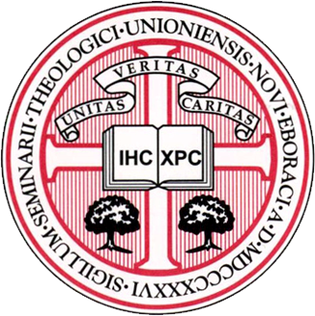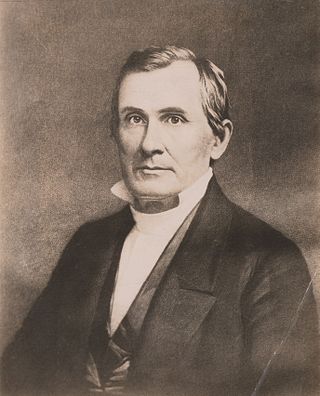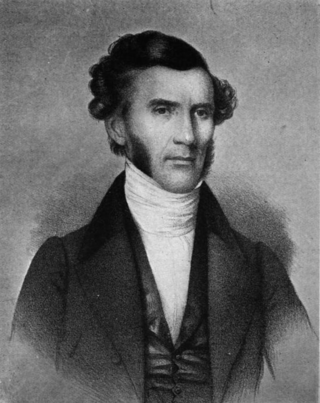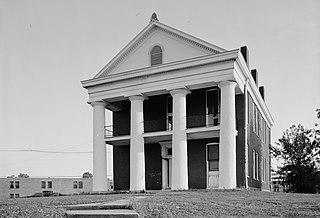Related Research Articles

Charles Hodge was a Reformed Presbyterian theologian and principal of Princeton Theological Seminary between 1851 and 1878.

Concordia Seminary is a Lutheran seminary in Clayton, Missouri. The institution's primary mission is to train pastors, deaconesses, missionaries, chaplains, and church leaders for the Lutheran Church–Missouri Synod (LCMS). Founded in 1839, the seminary initially resided in Perry County, Missouri. In 1849, it was moved to St. Louis, and in 1926, the current campus was built.

Andover Theological Seminary (1807–1965) was a Congregationalist seminary founded in 1807 and originally located in Andover, Massachusetts on the campus of Phillips Academy.

Lane Seminary, sometimes called Cincinnati Lane Seminary, and later renamed Lane Theological Seminary, was a Presbyterian theological college that operated from 1829 to 1932 in Walnut Hills, Ohio, today a neighborhood in Cincinnati. Its campus was bounded by today's Gilbert, Yale, Park, and Chapel Streets.

Union Presbyterian Seminary is a Presbyterian seminary in Richmond, Virginia, and Charlotte, North Carolina, offering graduate theological education in multiple modalities: in-person, hybrid, and online.

Union Theological Seminary in the City of New York (UTS) is a private ecumenical Christian liberal seminary in Morningside Heights, Manhattan, affiliated in Columbia University. Since 1928, the seminary has served as Columbia's constituent faculty of theology. In 1964, UTS also established an affiliation with the neighboring Jewish Theological Seminary of America. UTS confers the following degrees: Master of Divinity (MDiv), Master of Divinity & Social Work dual degree (MDSW), Master of Arts in religion (MAR), Master of Arts in Social Justice (MASJ), Master of Sacred Theology (STM), and Doctor of Philosophy (PhD).

Princeton Theological Seminary (PTSem), officially The Theological Seminary of the Presbyterian Church, is a private school of theology in Princeton, New Jersey. Founded in 1812 under the auspices of Archibald Alexander, the General Assembly of the Presbyterian Church (USA), and the College of New Jersey, it is the second-oldest seminary in the United States. It is also the largest of ten seminaries associated with the Presbyterian Church.

Covenant Theological Seminary, informally called Covenant Seminary, is the denominational seminary of the Presbyterian Church in America (PCA). Located in Creve Coeur, Missouri, it trains people to work as leaders in church positions and elsewhere, especially as pastors, missionaries, and counselors. It does not require all students to be members of the PCA, but it is bound to promote the teachings of its denomination. Faculty must subscribe to the system of biblical doctrine outlined in the Westminster Standards.

Cobb Divinity School was a Baptist theological institute. Founded in 1840, it was a Free Will Baptist graduate school affiliated with several Free Baptist institutions throughout its history. Cobb was part of Bates College in Lewiston, Maine, United States from 1870 until 1908 when it merged with the college's Religion Department.

Jennings Ligon Duncan III is an American Presbyterian scholar and pastor.

The Reverend George Junkin was an American educator and Presbyterian minister who served as the first and third president of Lafayette College and later as president of Miami University and Washington College.
The San Francisco Theological Seminary (SFTS) is a seminary in San Anselmo, California with historic ties to the Presbyterian Church (U.S.A.). SFTS became embedded in a new Graduate School of Theology of the University of Redlands in 2019. It was founded by the Synod of California in 1871.

Samuel Miller was a Presbyterian theologian who taught at Princeton Theological Seminary.

Auburn Theological Seminary, located in New York City, teaches students about progressive social issues by offering workshops, providing consulting, and conducting research on faith leadership development.
Illinois State University was a private institution of higher learning in Springfield, Illinois. It began as The Literary and Theological Institute of the Lutheran Church in the Far West in Hillsboro, Illinois, in 1847. It soon became known as the Lutheran College, and, locally, as Hillsboro College. In 1852, it relocated to Springfield and changed its name to Illinois State University. It ceased operations in 1868, but reopened as Carthage College in Carthage, Illinois, in 1870.

The Oneida Institute was a short-lived (1827–1843) but highly influential school that was a national leader in the emerging abolitionist movement. It was the most radical school in the country, the first at which black men were just as welcome as whites. "Oneida was the seed of Lane Seminary, Western Reserve College, Oberlin and Knox colleges."

Daniel Lynn Carroll was the sixth President of Hampden–Sydney College from 1835 to 1838.

Oakland College was a private college near Rodney, Mississippi. Founded by Jeremiah Chamberlain in 1830, the school was affiliated with the Presbyterian Church. It closed during Reconstruction, and some of its former campus is now part of the Alcorn State University Historic District.

Reverend Charles William Nassau D.D., was a Presbyterian minister and the fourth president of Lafayette College serving from 1849 to 1850.

David Nelson was an American Presbyterian minister, physician, and antislavery activist who founded Marion College and served as its first president. Marion College, a Protestant manual labor college, was the first institution of higher learning chartered in the state of Missouri. Born in Tennessee, Dr. Nelson had once been a slaveholder but became an "incandescent" abolitionist after hearing a speech by Theodore D. Weld. Unpopular with proslavery groups in northeastern Missouri, Nelson stepped down as president of Marion College in 1835. In 1836, Nelson fled Missouri for Quincy, Illinois, after slaveowner Dr. John Bosely was stabbed at one of his sermons. Nelson then remained in Quincy, where he founded the Mission Institute to educate young missionaries. Openly abolitionist, two Mission Institute sites became well known stations on the Underground Railroad, helping African Americans escape to Canada to be free from slavery.
References
- 1 2 3 4 5 6 7 8 9 10 11 12 13 14 15 16 17 18 19 20 21 22 23 24 25 26 27 28 29 30 31 32 33 34 35 36 37 38 39 40 41 42 43 McKee, Howard I. (April 1942). "The Marion College Episode in Northeast Missouri". Missouri Historical Review. 36 (3): 299–319 – via Digital Collections – State Historical Society of Missouri.
- ↑ St. Mary's seminary had been granted the right to confer university degrees in December 1830. (McKee, p. 313)
- 1 2 3 4 Lamkin, Charles Fackler (1946). A Great Small College: A Narrative History of Westminster College, Fulton, Missouri, 1946. St. Louis: Horace Barks Press. pp. 13–17.
- 1 2 3 4 5 6 Sampson, F. A. (July 1926). "Marion College and Its Founders". Missouri Historical Review. 20 (4): 485–488 – via State Historical Society of Missouri.
- 1 2 3 Richardson, William A. (January 1921). "Dr. David Nelson and His Times". Journal of the Illinois State Historical Society,13(4):433-463. — via JSTOR.
- ↑ Holcombe, Return Ira (1884). History of Marion County, Missouri. St. Louis: E. F. Perkins. p. 227.
- ↑ "Henry Watkins Allen". Louisiana Department of State. Retrieved 2021-05-28.